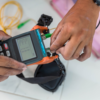
Fiber optic splicing is a critical part of building and maintaining high-speed fiber networks. Whether you’re working on FTTH, backbone, or enterprise installations, a single splice error can result in signal loss, downtime, and costly troubleshooting. This guide outlines seven common splicing mistakes and how to avoid them for better performance and reliability.
1. Not Cleaning the Fiber Properly
Contamination is one of the most common causes of splice failure. Dirt, oil, and debris can interfere with the fusion process and increase insertion loss. Always clean the fiber with high-purity isopropyl alcohol and lint-free wipes before cleaving and splicing.
2. Poor Fiber Cleaving
A clean, perpendicular cleave is essential for a successful fusion splice. Using a low-quality or worn-out cleaver can result in uneven fiber ends and high splice loss. Invest in a reliable fiber optic cleaver and inspect it regularly.
3. Using Damaged or Old Fiber
Fiber that’s been bent excessively, scratched, or stored improperly may not splice well. Always inspect the fiber before use. If you’re unsure of its condition, cut back and prepare a fresh section.
4. Incorrect Splicing Settings
Using the wrong fusion program for the type of fiber (e.g., Single Mode vs. Multimode) can result in poor alignment or incomplete fusion. Make sure your fusion splicer is calibrated and set to the correct parameters for the job.
5. Not Securing the Fiber in the Holder
Loose or misaligned fibers in the splicer’s holder can shift during fusion, causing poor alignment. Double-check that the fiber is properly placed and secured before starting the splice cycle.
6. Ignoring the Environment
Dust, wind, and moisture can all impact splice quality. Splicing should be done in a clean, stable environment — ideally indoors or inside a splice enclosure or tent. Use a splicing workstation to protect your tools and fiber.
7. Skipping Post-Splice Testing
Even if a splice looks good visually, it may still have high loss. Always test your splices with a power meter or OTDR to ensure proper signal transmission. Logging these results helps with documentation and future maintenance.
Conclusion
Avoiding these common fiber splicing mistakes can save time, reduce signal loss, and ensure your network performs at its best. Proper preparation, clean workspaces, and reliable tools are key to professional-quality splices. For installers in Cyprus, rapidsat.com.cy offers a full range of splicing products, equipment, and technical support.



















